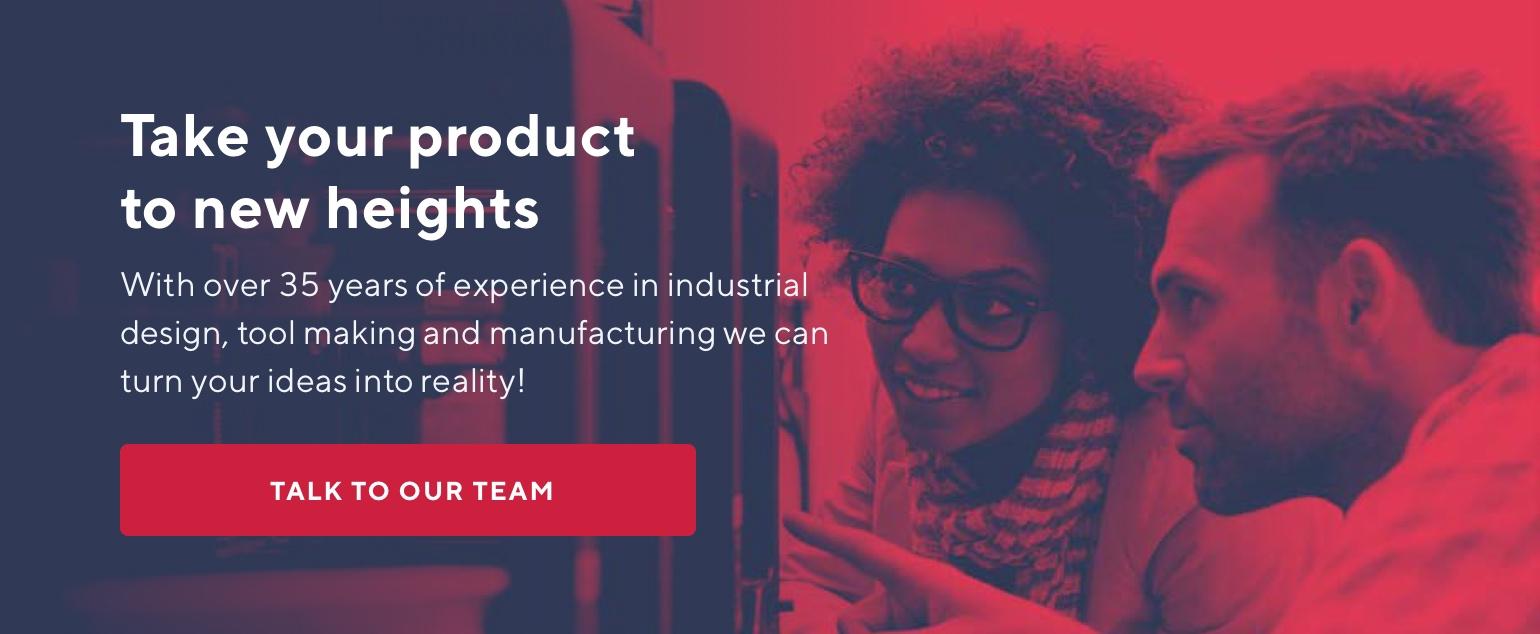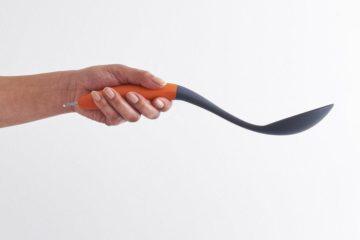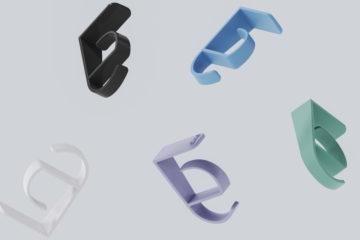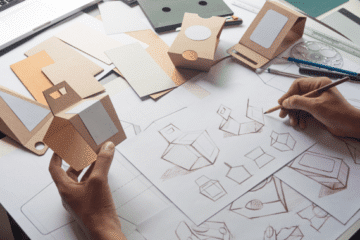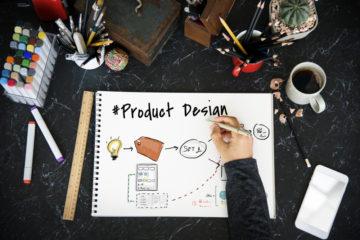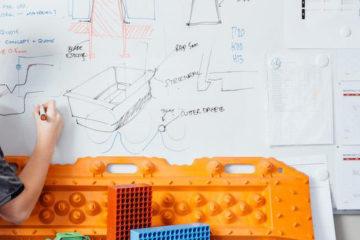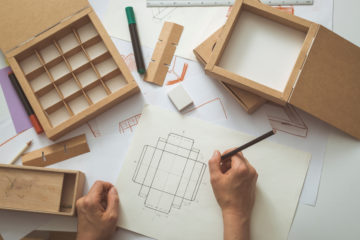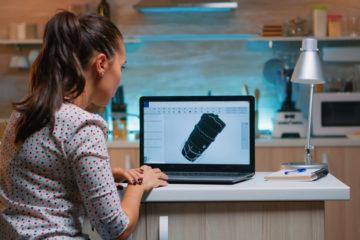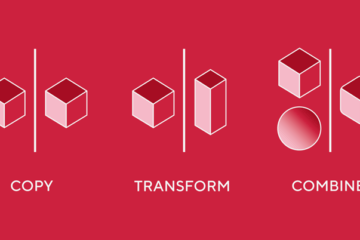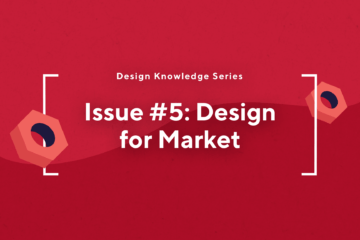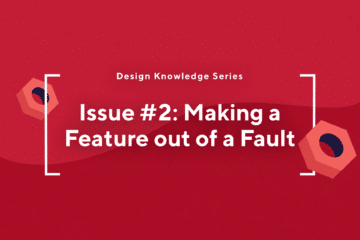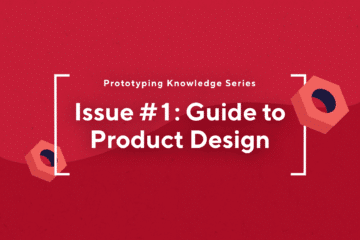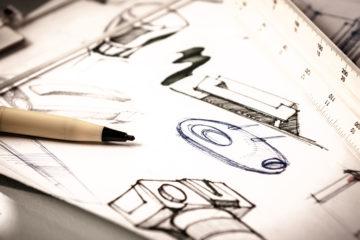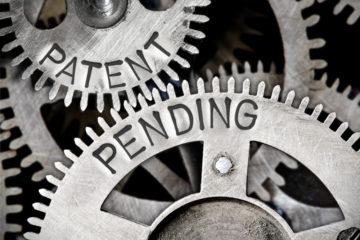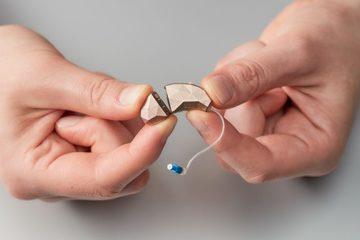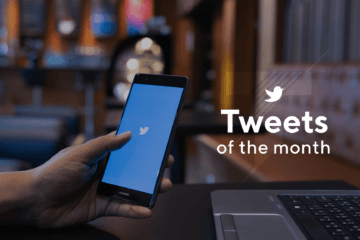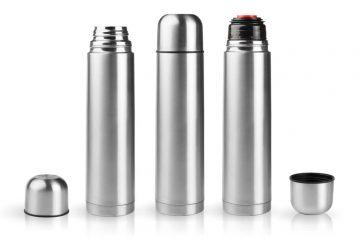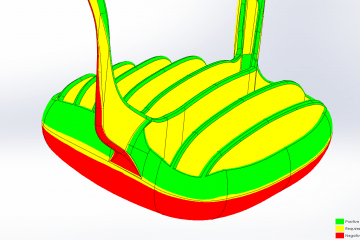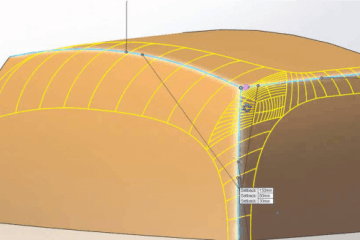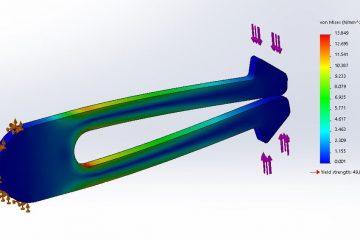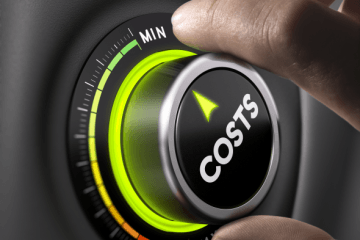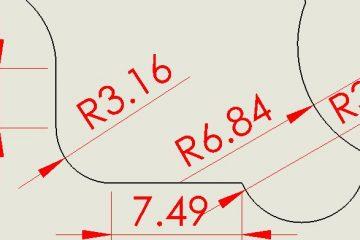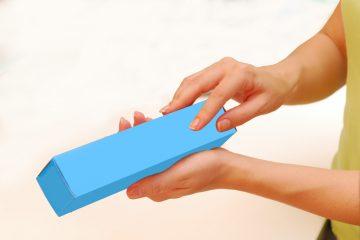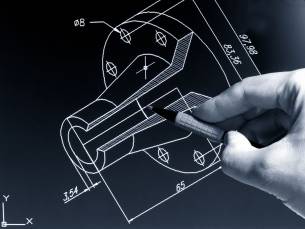
Have you got an idea for a new product that you want to get going and make a reality? Designing a new product is great fun and a highly rewarding process, but there are plenty of obstacles along the way.
Here are 5 things that will really help you before setting off on your journey to design a new product.
Who will use your product?
The first step in designing a product is to think about who will use it. Think about who your target audience is:
- Is it a large market or is it niche?
- Would your target market realistically buy your product at your target price point?
- What are their interests, lifestyles, and habits?
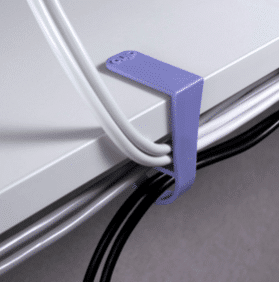
The Dino Cable Clip – designed for Dino Products by Dienamics – features a strong shape with soft curves and a subdued range of colours to suit a wide user group for home and office use.
Think about their demographics including age, education, income, location, interests and hobbies. For example, if you’re designing a desktop cable organiser, if your target customer is PC enthusiasts and gamers, the product design and price points for them would be vastly different than a cable organiser for university students. Knowing your market – and knowing them early – will structure how you design your product and what decisions you make along the design and business journey. This will dictate the success of your project.
How will it benefit them?
Once you’ve defined who your target customer is, it’s then useful to think about how your product will benefit these customers.
- What value are you adding to their life?
- How will it make a difference in their life?
- What primary problem does it solve, and which pain point does it ease?
- Which primary problems does it solve, or which added benefits does it add?
Following the cable organiser example, the cable organiser primarily solves the problem of messy cables for the customer, though a secondary benefit it adds may be fitting in with the style of their office or gaming setup. Another benefit if you designed your product with recycled plastics, would be giving the customer a way to make an environmentally friendly purchasing decision.

The Dino Clip offers a range of colours to suit any environment and increasing its sense of place in the customer’s space. This adds a secondary benefit to the customer of aesthetic cohesion and harmony in their workspace, whilst still serving its primary benefit of accurate cable management
Make a list of the benefits you want your product to bring and keep this in mind when designing it. Remember, form follows functions.
How will your product fit in the market?
Then, you need to do research into your target market and determine where your product will fit. Will it fill a gap in the industry? Is it unique, or does it face competition? Take a look at what others in your industry are currently doing, what price points are out there, which features are currently on the market. Market research works for some, yet others have full faith in their idea and go for it blind. Whilst this does work for some, it is definitely risky. It’s best to get out there and get a solid feel for the market – this is true for new businesses, in learning how to align their product and mature businesses, in learning how to tweak their product line, add further offerings, or get inspiration.

Although essentially all three products (L to R: Klean Kanteen, Yeti, Thermoflask) are very similar products, they each are targeted to serve a different place in the market. Yeti is rugged & bomb-proof for outdoorseople, Klean Kanteen is fun and personalised, and Thermoflask strives for practical everyday user-friendliness.
You will almost always find somebody out there that is doing the same thing that you want to be doing or some company that has designed your great idea before you, but don’t be discouraged by this. Can you do it better? What are the weaknesses in their product? Perhaps they have the perfect product but their business strategy has holes in it? Can you do it better?
What is your brand identity?
There are entire books written on brand identity, but in short, it is this that ties together your brand. Your brand identity needs to be clearly defined, as it is the very thing that make your brand unique. It’s the thing that makes any part of a Dyson vacuum feel like a Dyson, or a Toyota feel like a Toyota. This brand identity is imbued in physical design, in colour, in form, in branding, logos, social media, and even communications. The greatest companies are known for their strong brand identities. Of course, they have entire teams working to bring the identity out in every aspect, though brand identities can be implemented by anyone. Many start-up companies do not give it any thought, and this is really what makes the difference and lets you stand apart.
Take what you now know about your product, your customer, and how your product fits in the market, and thing about how you want your brand to look and feel. Do you want it to be proud, strong, and commanding (this would be suitable for a 4WD product but not for a baby product!) or do you want your brand to be soft, inviting, and soothing – (this is much more suited for baby products). Nailing down the look and feel of your brand will then guide which colours you use, what fonts, what your logo will look like, your brand name, names of your products, and the form of your product. Nailing this down early helps you bring all of your products into line in a cohesive way that tells your customer “This brand is a quality brand”.
How will you promote your product?
Finally, it’s time to think about how you will promote your product after it’s been designed and manufactured. Will you have a launch event? Which marketing tools will you use to ensure that your target audience hears about your product? Do you have any local contacts or are there local events that will help spread news of your business by word of mouth? Perhaps a crowdfunding page a good option forwards for you? Products with high “wow” factor that are relatable by a lot of the general population do really well on crowdfunding pages, though they aren’t best for everyone – particularly if your product is highly niche and technical.
Having a marketing plan before designing your product will help you to set a clear path.
Subscribe to Our Newsletter
Get the latest news from Dienamics into your inbox





